
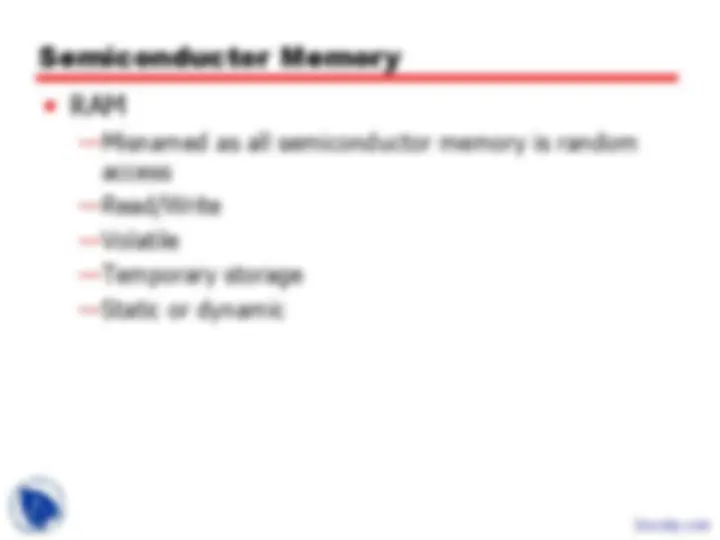
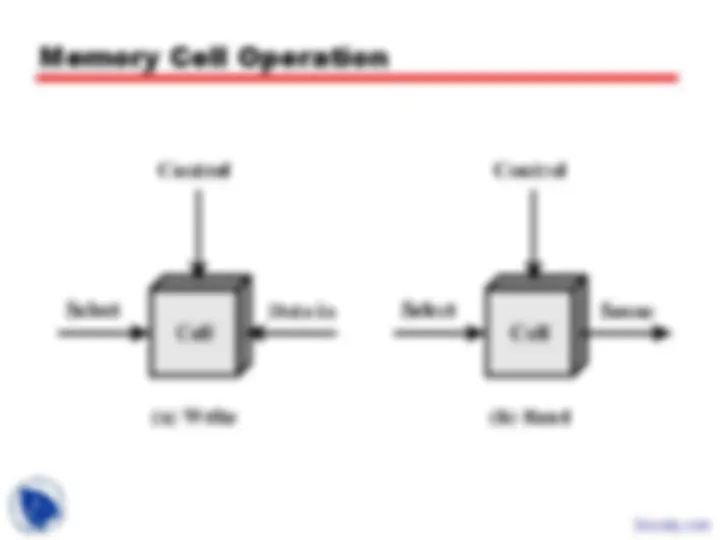
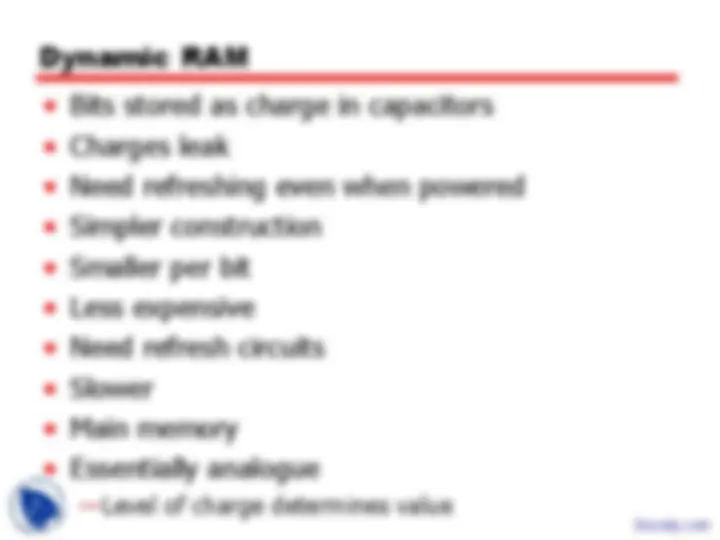
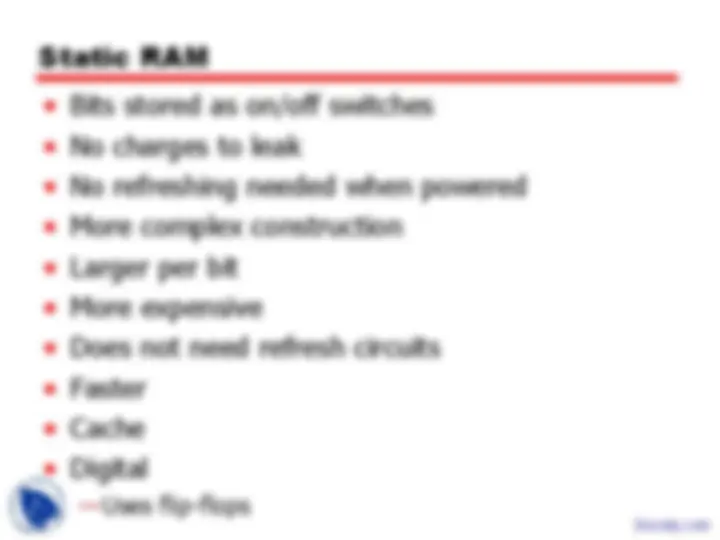
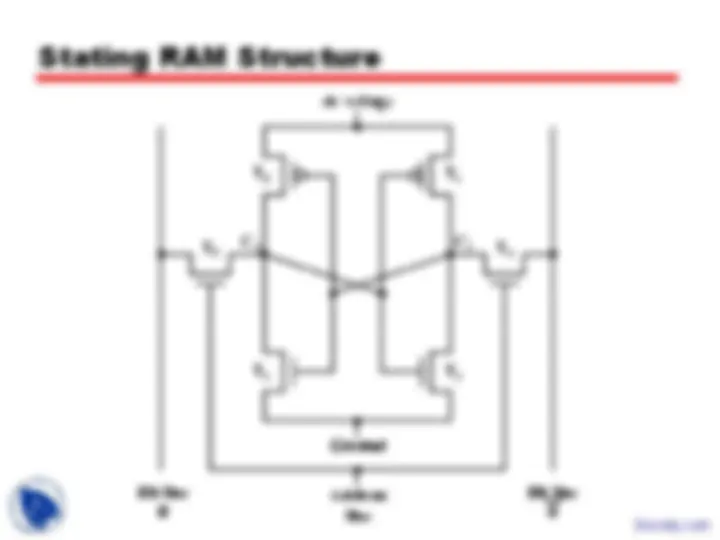
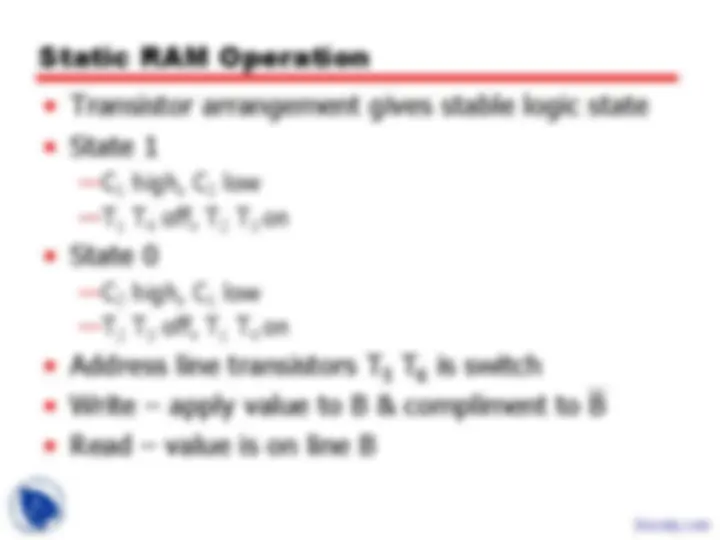
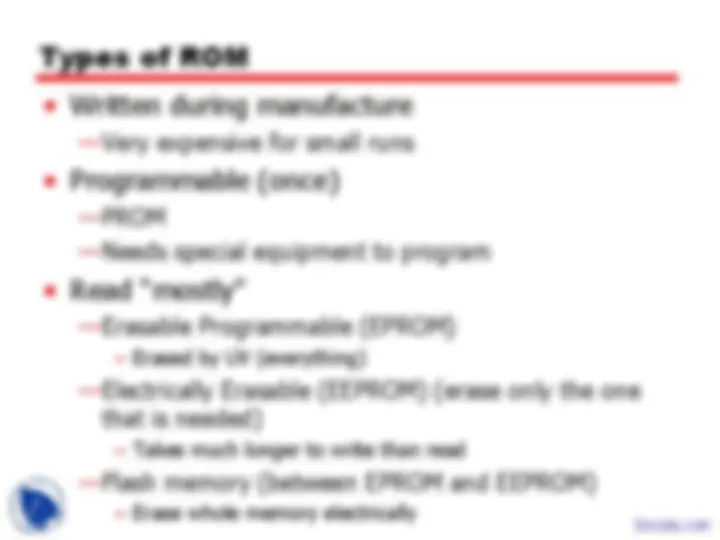
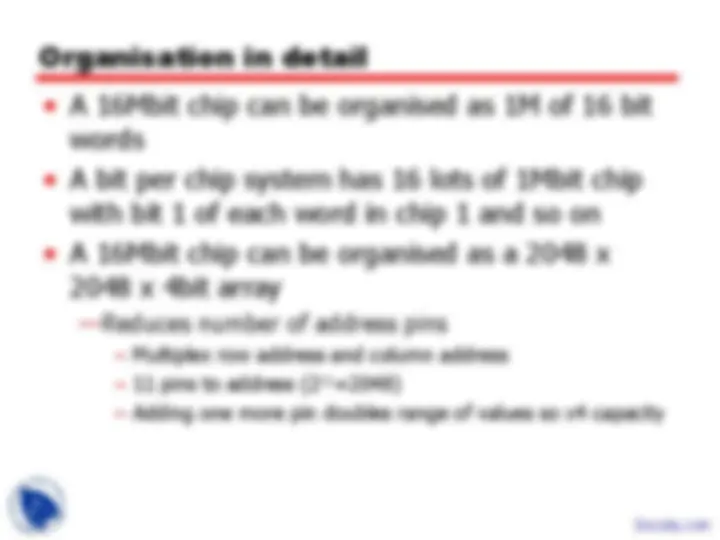
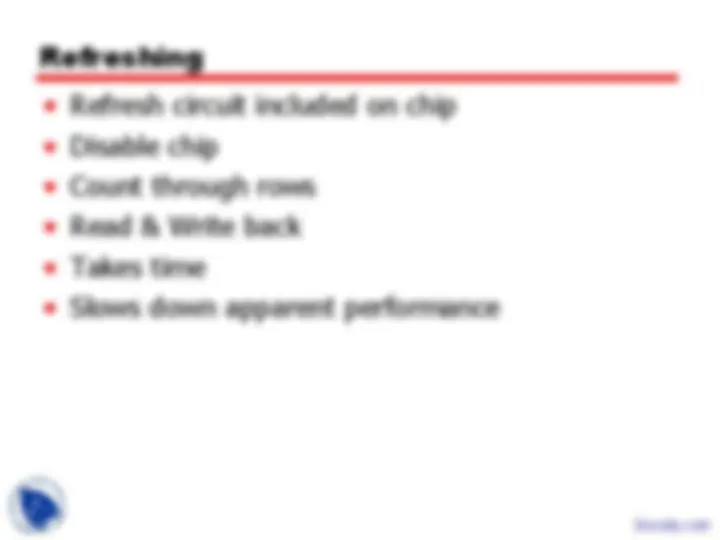
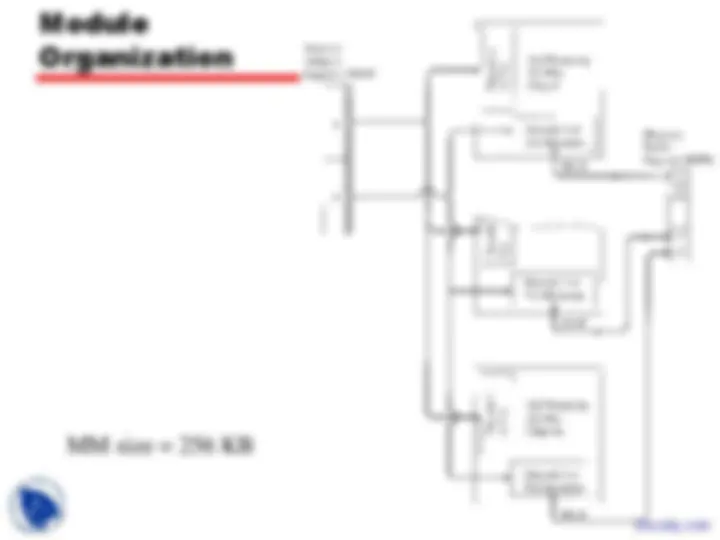
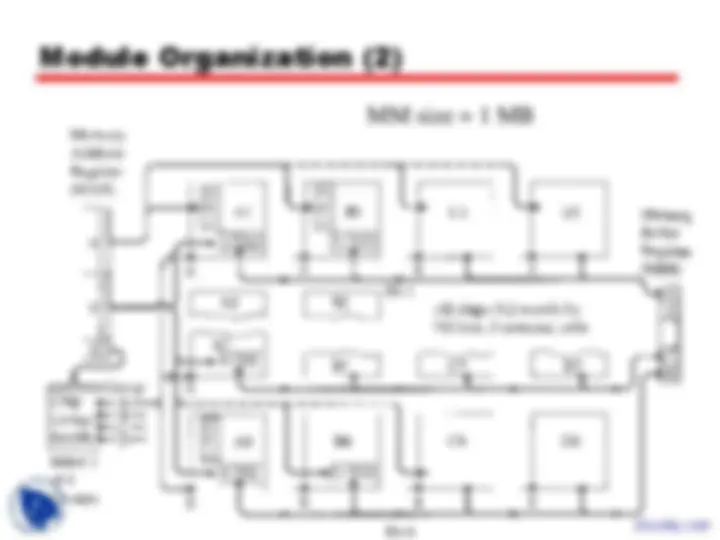
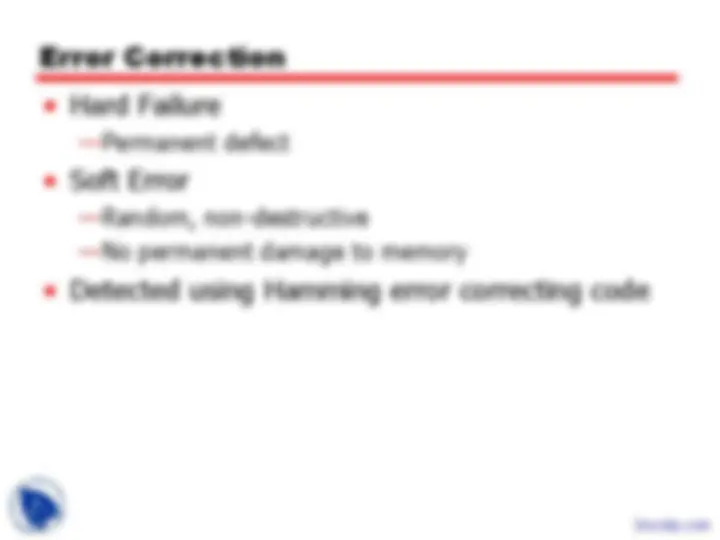
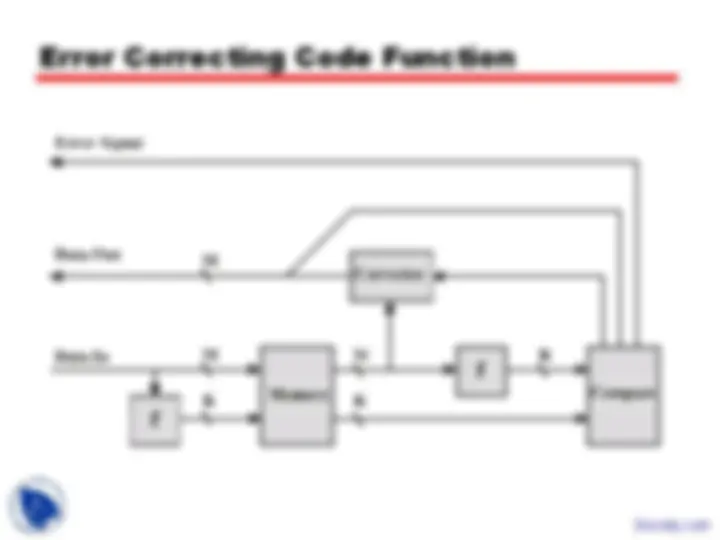
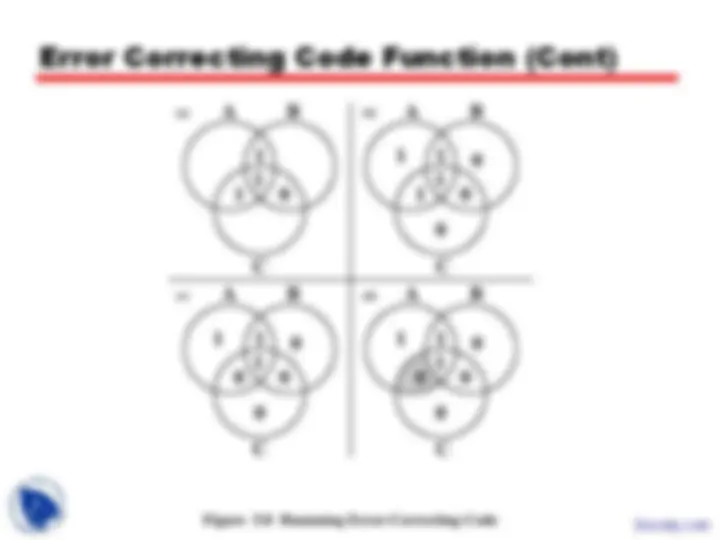
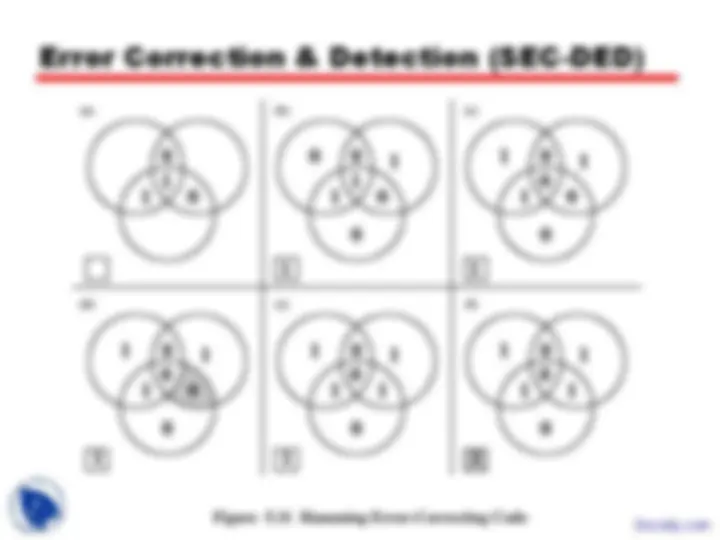
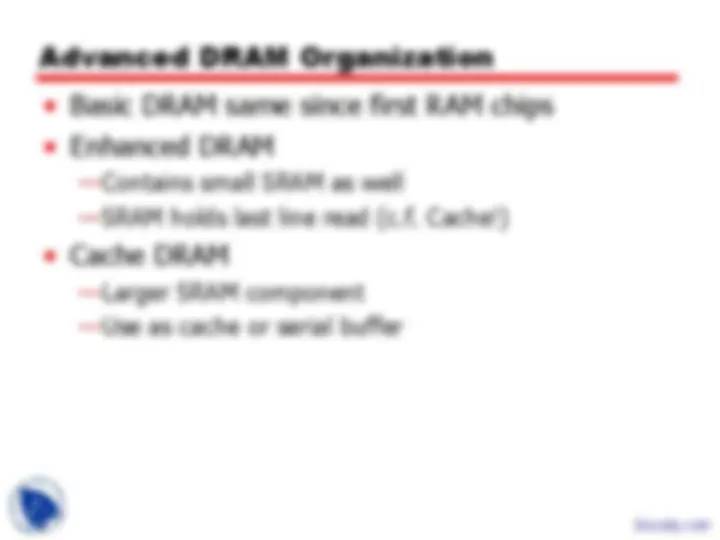
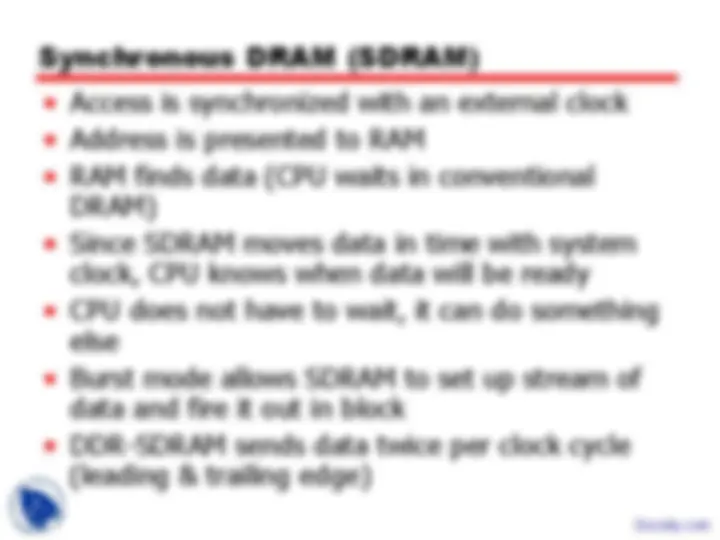
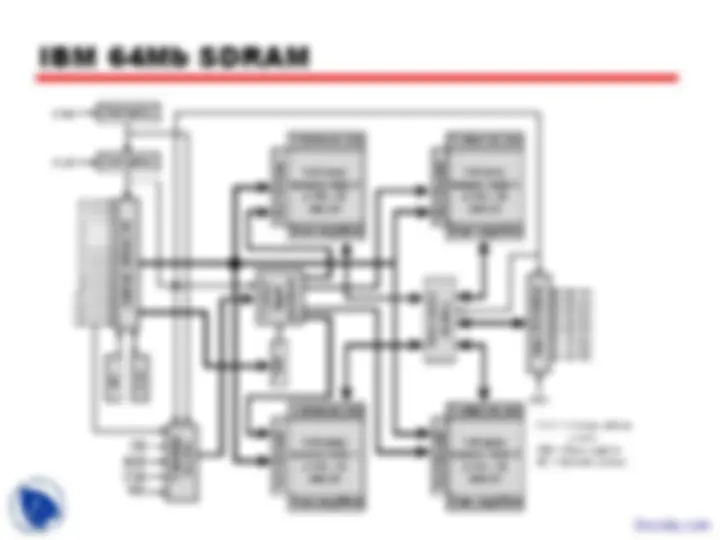
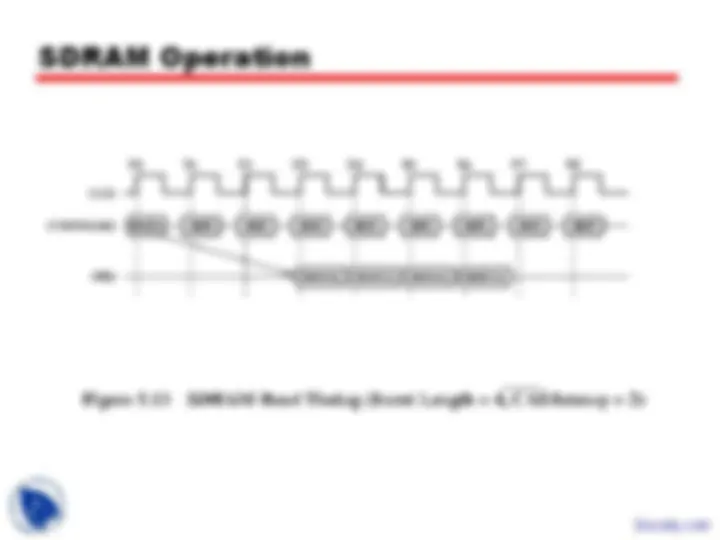
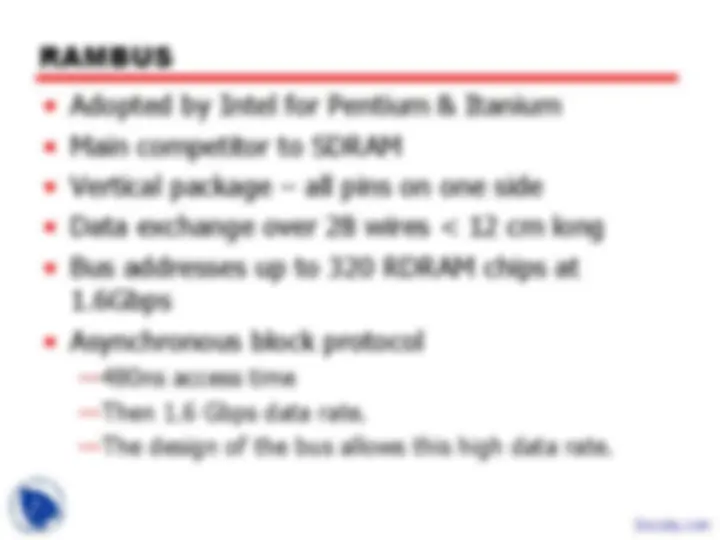
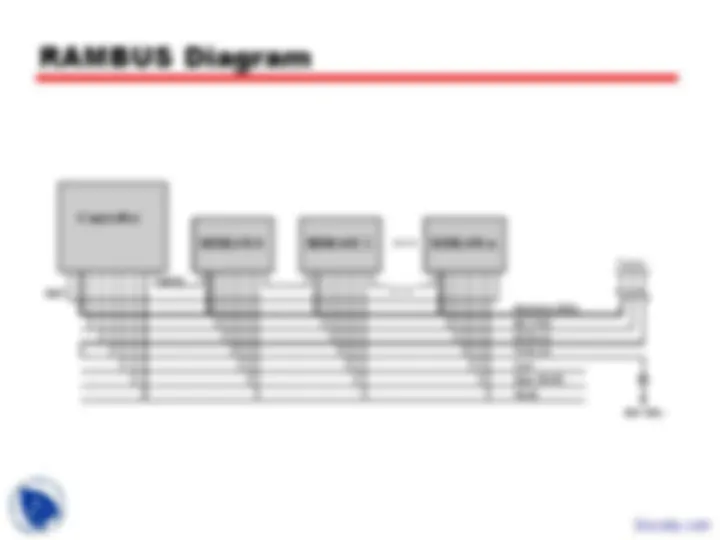


Study with the several resources on Docsity

Earn points by helping other students or get them with a premium plan


Prepare for your exams
Study with the several resources on Docsity

Earn points to download
Earn points by helping other students or get them with a premium plan
Community
Ask the community for help and clear up your study doubts
Discover the best universities in your country according to Docsity users
Free resources
Download our free guides on studying techniques, anxiety management strategies, and thesis advice from Docsity tutors
This document from docsity.com provides an in-depth explanation of the different types of semiconductor memory, including static ram (sram), dynamic ram (dram), and read only memory (rom). It covers the structure, operation, and advantages/disadvantages of each type, as well as details on refreshing, packaging, organization, error correction, and synchronous dram. Additionally, it introduces rambus as a main competitor to sdram.
Typology: Slides
1 / 29

This page cannot be seen from the preview
Don't miss anything!






















Chapter 5
Internal Memory
Semiconductor Memory Types
Memory Cell Operation
Dynamic RAM
DRAM Operation
Static RAM
Static RAM Operation
SRAM v DRAM
Types of ROM
Organisation in detail
Typical 16 Mb DRAM (4M x 4)
Packaging
1M X 8 bit 4M X 4 bit
Module Organization (2)
MM size = 1 MB
Error Correction